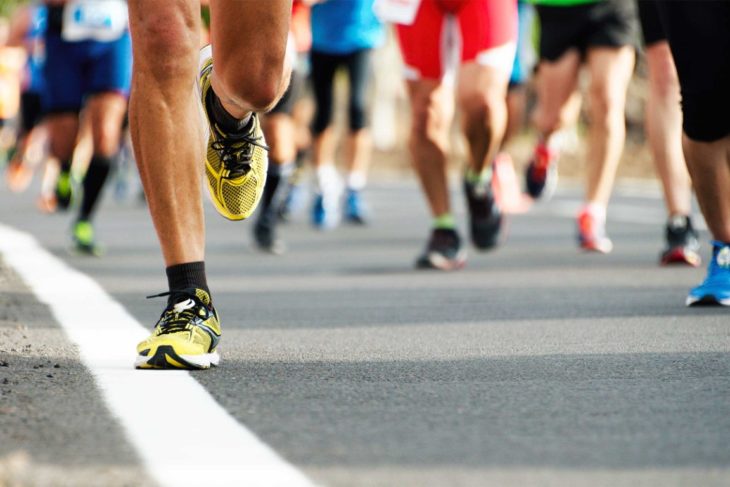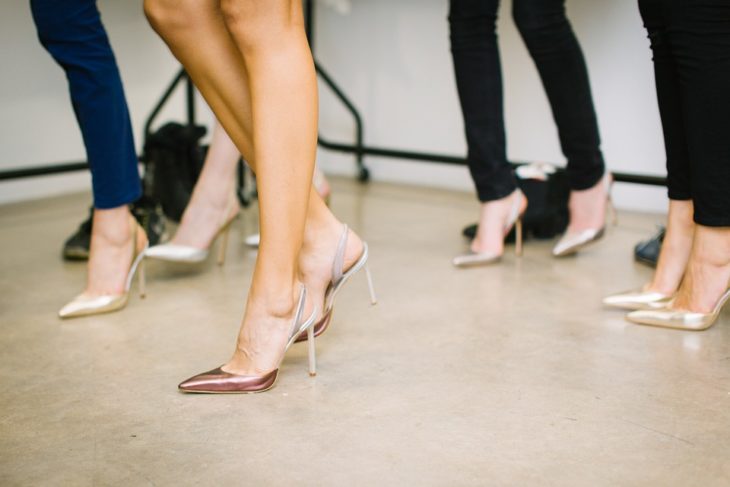Two weeks before the Chicago Marathon, I bought a new model of the shoes I’d been training in and started running in them to try to break them in for the race. I bought them without trying them on because I figured Saucony probably wouldn’t change much about the shoe between models. I was mistaken, and I wound up getting avascular necrosis in the joint between my second toe and the metatarsal bone it’s attached to at the ball of my foot, which means that there was insufficient blood flow to the joint. The toe is slightly off-center from where it should be, and the lack of blood supply has changed the shape of the metatarsal at the joint — it’s squared off where it should be rounded.
I spent four months running, and now I can’t run until the new year. I thought I was OK with that, because I’d had quite enough running by the time the marathon was over; but then, the last time I was at the gym, I saw some women jogging by outside while I was doing a strength workout, and I felt jealous. I’m doing spin workouts to keep my lung capacity up, but it’s not the same. There are moments when you’re running when you feel like you’re flying.
I have never in my life felt so connected to my feet as I have since I started training for the marathon, not least of all because they got injured so frequently. I had been doing two-mile or three-mile runs on treadmills in Vibram minimalist running shoes before I started training for the marathon, and enjoyed the way it felt, and found my calf strength improving for it; but when I did my first long run in the minimalist shoes, I made the mistake of striking wrong — I landed on my heels, not the balls of my feet, and I jammed the joint between the metatarsal and the cuneiform bones (back further toward the ankle). Almost every week, one or both of my talus bones (think of it as the ankle bone) would be twisted out of place. As training went on, the muscles in the arches of my feet got knotty. This made it hard for my friend who was graciously adjusting my feet for me to adjust them properly, so he had to knead out the knots, which induced a sort of pain I wouldn’t wish on anyone. He said I might have the beginnings of plantar fasciitis, which is a possibility that doesn’t excite me.

Source: Die Pos
I never really thought about my feet much because I’ve avoided cardio for most of my life — I’m generally more impressed by strength, flexibility, and balance than I am by stamina, so those are the goals I’ve worked on. My feet never had a whole lot of pressure or stress put on them. I regret it now, because at 27, my feet are weak, and that was the whole problem during marathon training. I did stupendously, by the way: I aimed to finish at 13 minutes a mile and finished at 12:25. For reference, when I started running, I ran three miles at 12 minutes a mile. I beat my 20-mile pace by 20 seconds. I never felt out of breath and my legs didn’t get unduly tired. Everything about my body had adapted well to the training … except for my feet.
So now I’m a little bit obsessed with them. I’m seeing a podiatrist, obviously, because I really, really want to run. I tape, stretch, massage, and soak my feet, and I wear shoe insoles from companies such as Protalus. I pay attention to how my bones lie in my sneakers. I’m coordinating my wardrobe around my nice, roomy running shoes so that I can wear them all the time. This injury happened because I wore the wrong pair of shoes for three or four runs — that’s all it took after three and a half months of training.
After years of not really thinking twice about them except after 10-hour shifts on my feet in a kitchen, I actually really look at my feet. And other people’s, too — I notice the way women’s feet look in their shoes, and how shoes are constructed to accommodate feet. My boyfriend and I watched “The Purge” this weekend and I was struck by how beautiful Lena Headey’s feet looked in her heels. And I watched this video of ballerinas preparing their pointe shoes and was mesmerized by it — these women know everything about their feet. Where they’re weak, where they’re strong, how they’re shaped, how they land on them, and how to reconstruct their shoes to work around and protect their feet. It’s astonishing. I want to be that friendly with my feet. Hell, I want to be that friendly with my whole body.

Source: Pixabay
I’m coming to the point in my life where the things I’ve neglected about my body are coming back to haunt me, where I’m done developing and am about to turn the corner into aging. They’re small things, but if I don’t carve out time and money to dedicate to my body now, they’ll be much bigger by the time I’m 35. I envy the sort of meditative physical practice that athletes develop when they’re young, because I’m just now having to start developing it, myself. And it’s strange to me that a pair of shoes can spin me into reflection on my mortality, but it turns out that shoes are much more important than I had ever guessed.
[h/t Atlantic]
Original by Rebecca Vipond Brink
